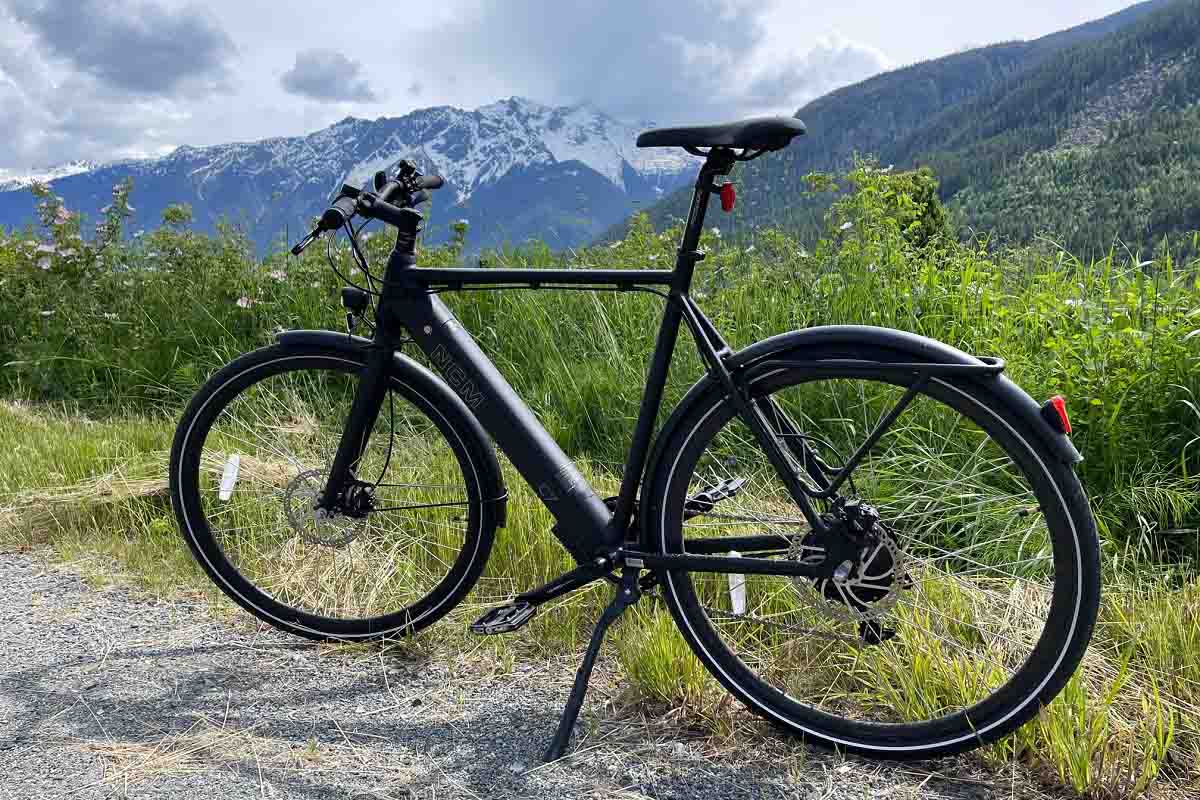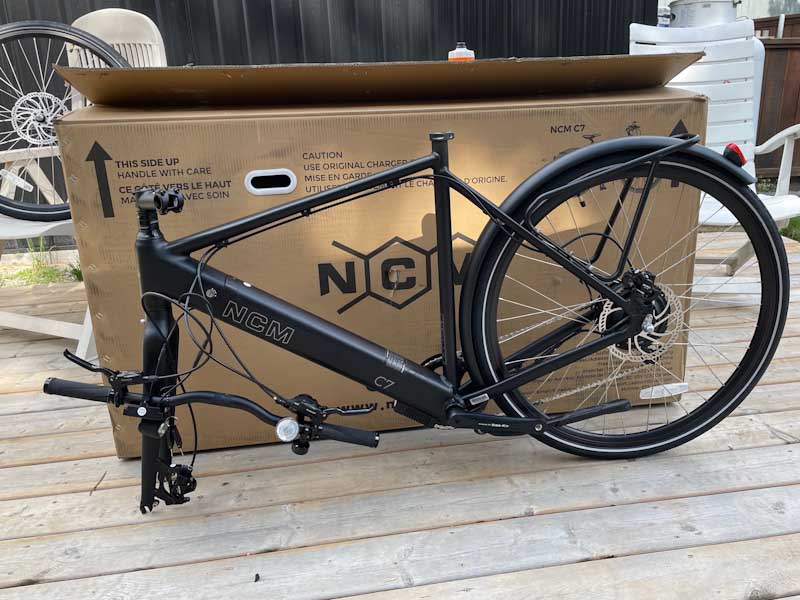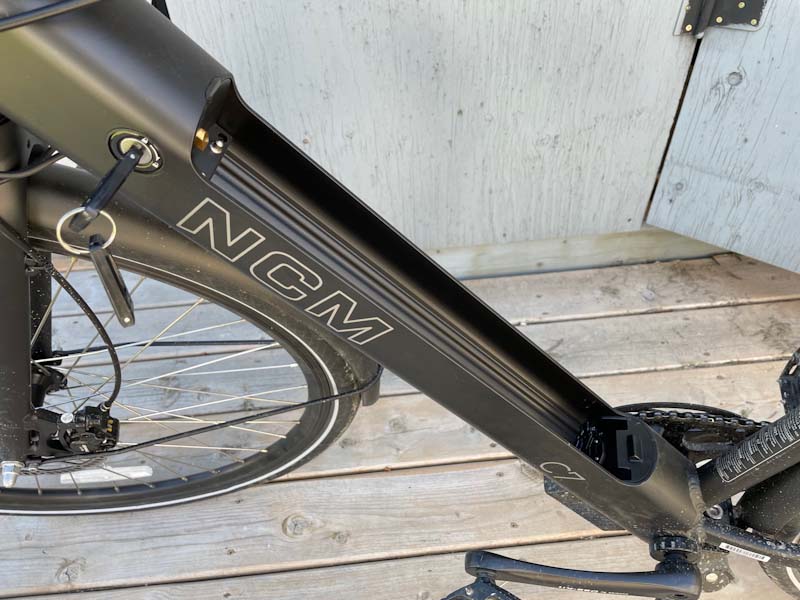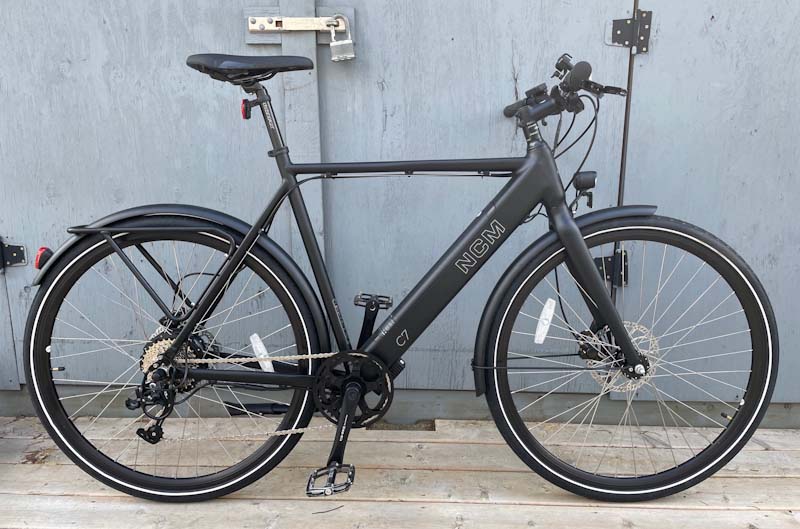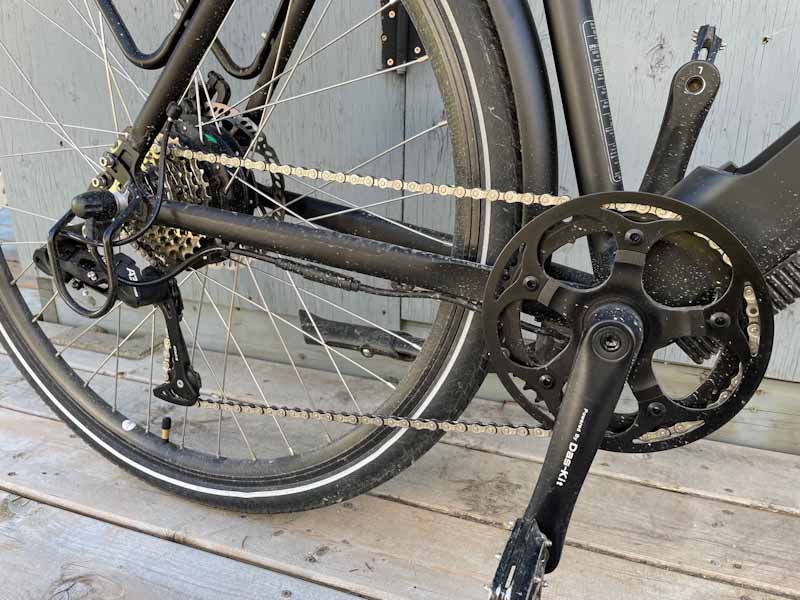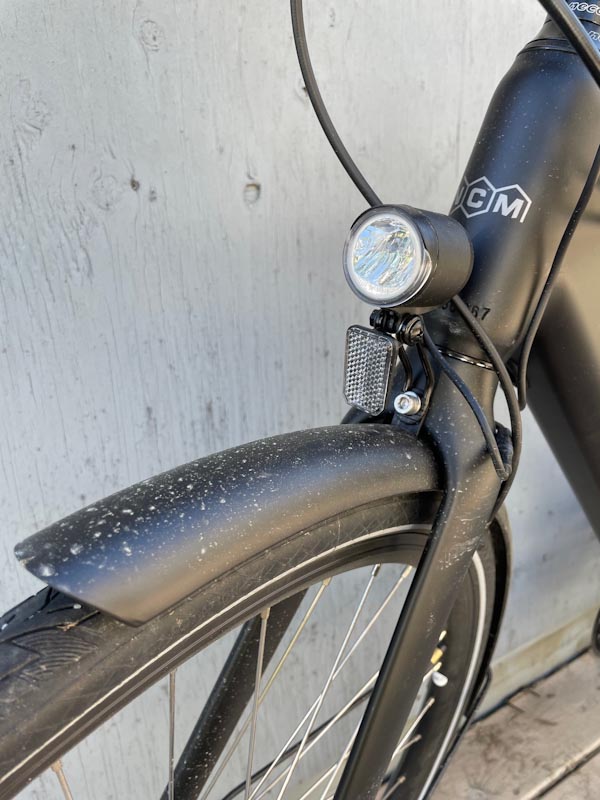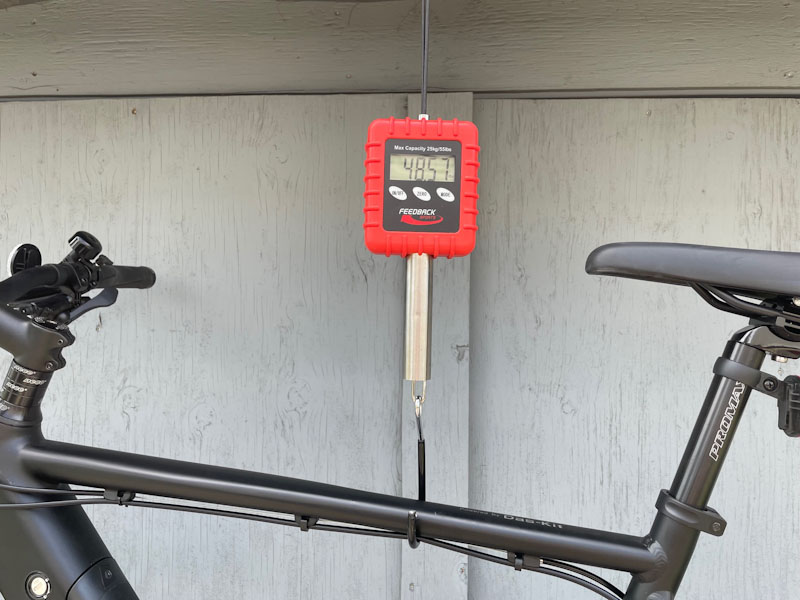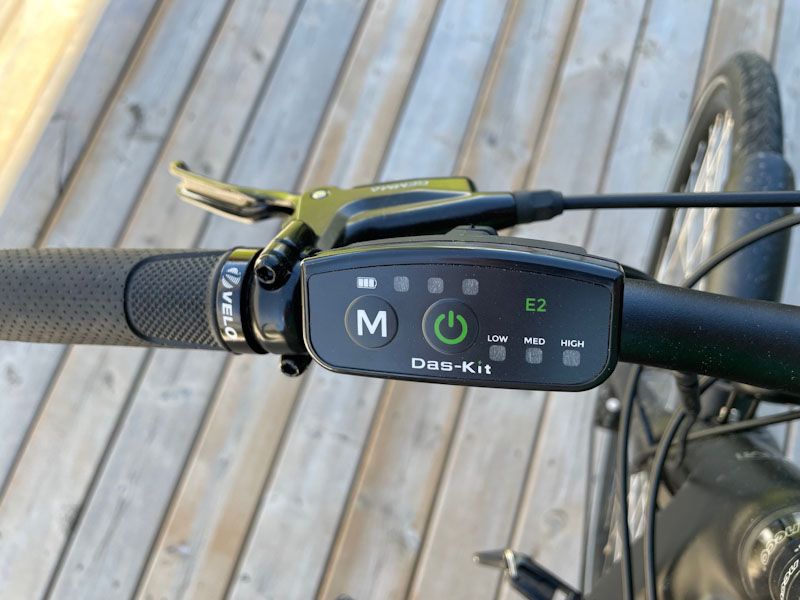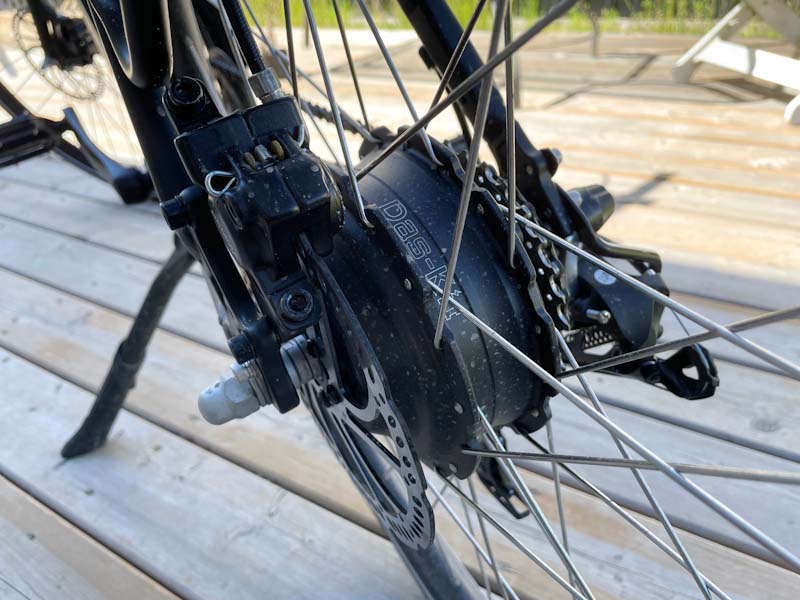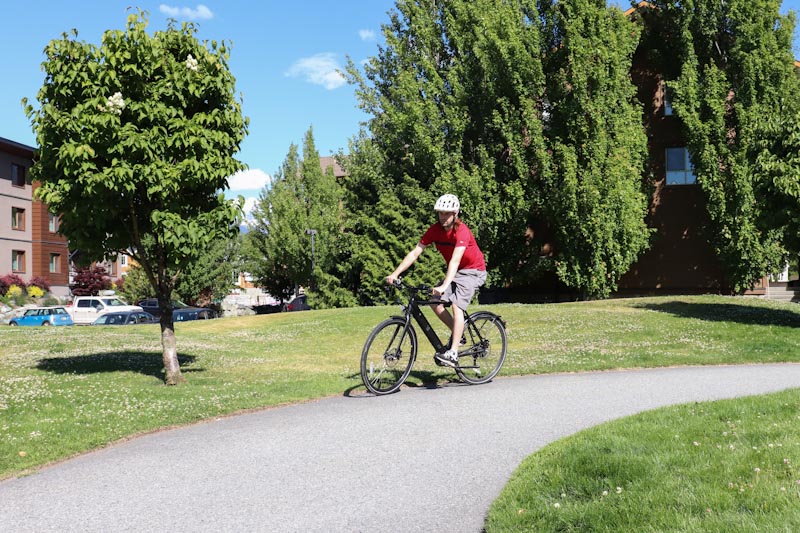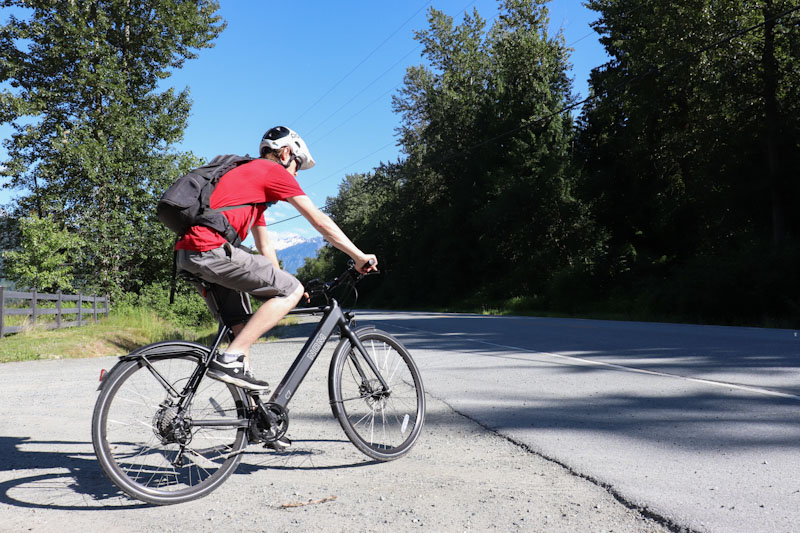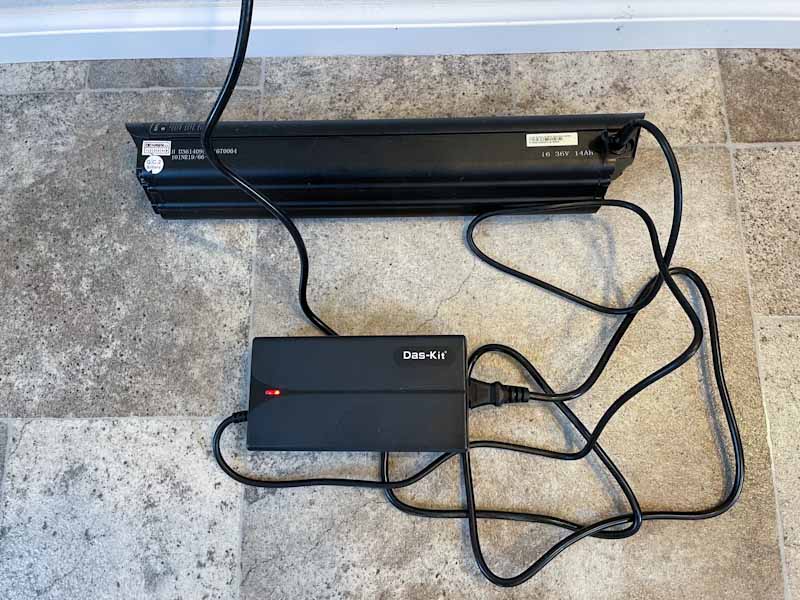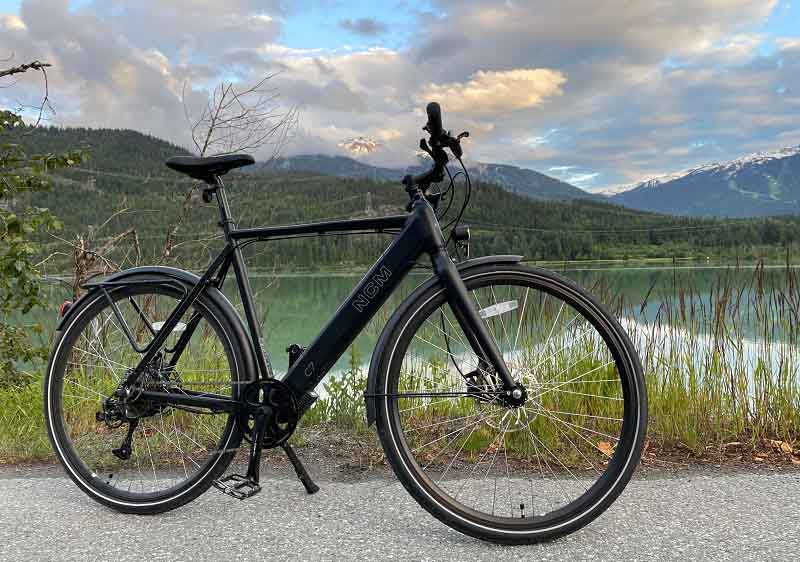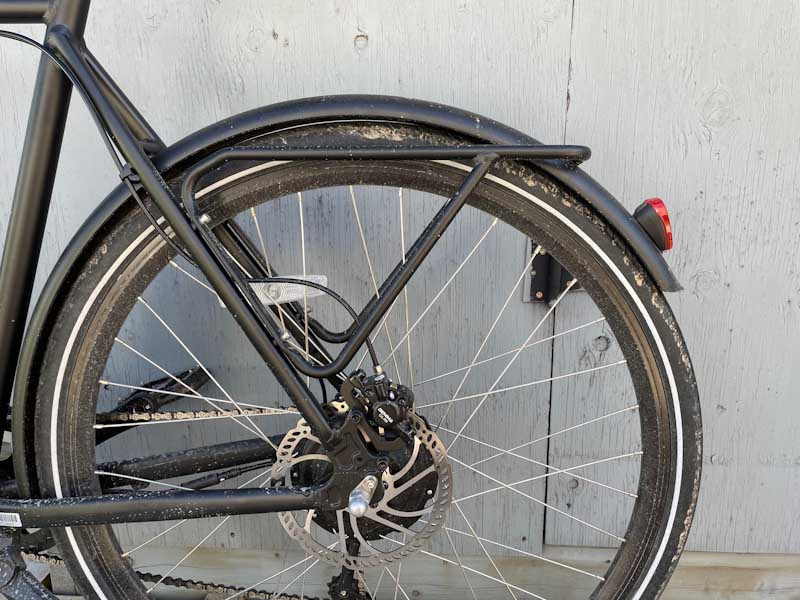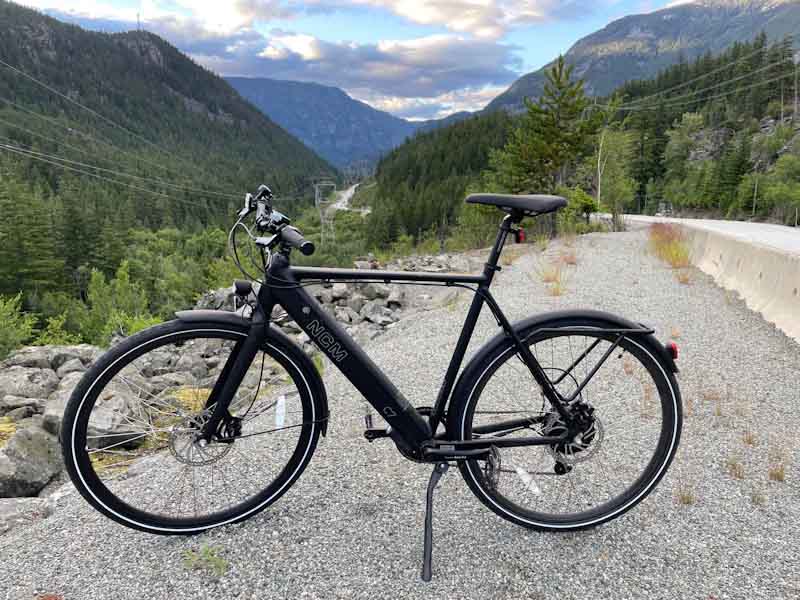The big questions when searching for an e-commuter bike are how much bike do I need, and how much do I have to spend to get it? This spring I got to demo an NCM C7, an e-commuter that provides the basic necessities (power, that is) but forgoes some luxuries to keep its price at entry-level.
NCM is a sub-brand of Leon Cycles, a company who produces a range of electric bicycles. I’ve been riding the C7 since early May, and I’m pretty impressed with the bike’s capabilities given its very reasonable price tag.
Leon Cycles’ NCM C7 e-bike Assembly
NCM supplies a bag of tools to set up the bike, including two double ended wrenches with 13/15mm and 10/8mm, four allen keys (6, 5, 4 and 3mm) and a phillips screwdriver. The supplied tools did almost everything necessary to set up and check over the bike: If you wish to check the rear axle nuts you’ll need a 17mm wrench, and I had to tighten a loose grip with a 2.5mm allen key. Otherwise, I opted to install alloy platform pedals instead of the supplied plastic set, which required an 8mm allen key.
The bike arrived mostly assembled: I had to install the front wheel and fender, handlebars, bolt on the headlight, drop in the seat/post and screw in the pedals. I found no issues during assembly aside from one loose grip.
The C7’s instruction manual does not specify how long it takes to charge the battery, it only tells you it’s ready when the charger’s light turns green. Simple enough, but it would be nice to know the charge time! After draining the battery a few times, I found out a full charge takes 5-6 hours.
The battery cannot be charged inside the frame, it must be removed to expose the charge port on the battery itself. Removing the battery takes two seconds, and is a convenient (actually preferred) charging option for me since my bike storage area does not have a power source. NCM supplies two keys to remove the battery, which fold down to a compact size.
Frame/components
The C7 is built around a rigid aluminum frame and a 1-1/8th threadless aluminum fork. The lack of suspension and wheel/tire choice makes this bike most appropriate for road riding, but the 700x38c tires are wide enough that you can easily boot the C7 over a grassy field, a packed dirt trail, or a crushed gravel path. I think they hit a nice balance between keeping the bike fast rolling on roads, without strictly limiting it to paved surfaces.
Despite the C7 model name, this bike has an 8-speed drivetrain. The trigger shifter and derailleur are basic level parts, but one nice inclusion is the hydraulic disc brake system. The build rounds out with a Selle Royal gel-filled seat, no-name bars and stem, and a set of plastic pedals.
Key commuter accessories included on the C7 are front and rear fenders, an integrated headlight, a taillight on the rear fender, and a rear pannier rack. The C7 also comes with a bell and a kickstand, plus the tires have reflective sidewalls. Nothing on this bike is quick-release, so your wheels and saddle can’t be easily stolen, and the battery requires a key to remove.
Claimed weight for the C7 is 50lbs, but my scale showed it comes in a bit under that at 48.57lbs (with pedals).
Das-Kit e-Bike Drive System
E-bikers will notice right away the C7 does not have a digital display screen, or several other common e-bike functions. This bike does not have a throttle, speedometer or odometer, a horn, nor does it provide any ride metrics like distance per ride, elevation, etc. This may sound disappointing, but you can’t expect to get all the bells and whistles on an e-bike in this low price range.
What you do get is a handlebar-mounted controller with two buttons and some LED indicators. You push the power button to turn the bike on, and hold it to turn the bike off. Once turned on, a quick tap of the power button switches the C7’s integrated headlight on/off. A separate Mode button cycles through the three power assist levels (low, medium, high).
Battery life is indicated by three green LED’s, and when the power gets very low the last LED starts blinking red. The bike gives you generous warning before it dies; I rode about 20km with one LED left, then rode a few more km’s with the light blinking red.
The C7 is assisted by a Das-Kit rear hub motor that puts out 350w, and the battery is a 36V, 14Ah, 504Wh unit. Power is delivered according to pedal torque, and aside from some quirks I’ll describe below, the motor provides enough assistance to make this bike a capable choice for anything short of lengthy, hilly commutes.
How does the C7 e-Bike ride?
As I’m most familiar with the fit of a modern mountain bike, I went for the longer of the C7’s two frame sizes (M or L). At 5’10” I found the large frame’s 440mm reach comfortable, but it does keep me in a somewhat aggressive riding position for a commuter bike (which I don’t mind). The medium frame’s reach is considerably shorter at 390mm.
I did find the standover height on the high side at 835mm. Some people might struggle throwing a leg over the frame’s horizontal top tube, and the medium frame is only a bit lower at 800mm.
While tightly surrounded by mountains, my hometown sits in a very flat valley. Right away I found the C7’s Low power setting is ample for cruising flat terrain. With a few cranks I was flying along, impressed with the amount of power the lowest setting provides. All my around-town rides were ridden in Low power mode, as I never felt the need to go higher.
For riding up hills, the Medium and High power modes will come into play. Low mode is easily overwhelmed by an incline, but jumping to Medium or High power makes a noticeable difference with each step. High power mode gave enough assist for pedalling up long rural highway hills with relative ease, so I’d say the C7 is powerful enough for anything short of very long daily commutes in hilly terrain. More on that below!
Most of the time the Das-Kit motor delivers power in a satisfying manner, and smoothly assists your pedalling efforts. However, in some situations the motor has an annoying tendency to actually create friction as it spools up to provide boost. This is the power delivery issue I eluded to earlier.
On my early production bike, when I got cranking along at a good speed, then took a rest, then started cranking again, I’d feel resistance for about 5 seconds as the motor caught up to my speed and pedalling force. At first I assumed this was totally normal for the hub motor, and wasn’t too concerned as it was a small price to pay for the satisfying boost the bike does provide overall. However, as my test went on I found this quirk increasingly more annoying.
With further testing I found the motor or torque sensor also seems to struggle with really hard pedalling efforts. I’m not a professional athlete, but my legs could put enough power to the pedals that the motor seemed unable to figure out what to do. Under a lot of force, the C7’s motor would go into its annoying ‘spool-up’ routine, stop delivering power and actually create drag. Every ebike has an optimal torque/cadence point, and it seems the C7’s is low enough that it can be overpowered. I can’t say for sure if this is connected to the ‘spool up’ problem or if this is simply the bike’s limit.
This issue keeps the C7 out of the ‘high-performance’ category of e-commuters, as serious riders looking to travel at top speed will likely find the bike can’t keep up with their leg power. That said, I still think the C7 is an adequate machine for most typical ebike use, like booting around town or non-marathon level commuting.
Now after discussing the power delivery issue with NCM’s rep, I was told roughly the first 100 bikes produced (including the C7 the PR agent was riding) may have this problem. However, any bikes produced afterwards received a firmware update which apparently resolved the issue. Unfortunately, we were hoping to perform the update and confirm results, but (for good reasons that would require a long explanation) we were unable to get the agent’s bike updated. If anyone has an early model C7 and believe it has the issues I’ve described, NCM said they should contact the company, who will ship their bike to a dealer, perform the update, and ship it back.
For cruising around town, I found the C7’s battery life impressive. Most of my townie rides are quite short, but I went a few weeks between battery charges when I wasn’t covering longer distances. When I challenged the battery to a long highway ride, I found its limit – One 35km ride with a fair bit of elevation gain almost completely drained it.
Despite the C7’s basic components, everything performed fairly well throughout my test. The rear derailleur required a few adjustments to keep it shifting properly, but that’s the only functional issue I had with any non-electric component. The bike’s gear range is ideal; even on my hilly highway ride I was happy with what I had.
The gel-filled seat isn’t bad but I didn’t find it super comfortable, and I’d say the same for the grips. The hydraulic brakes offer ample power and all-weather performance, and the fenders’ generous coverage kept me clean and dry on rainy rides. The integrated headlight isn’t super bright but certainly helps in the dark.
I didn’t push the bike’s off-road capabilities, but the alloy wheels are both running straight and true. There’s really no damage or wear and tear to speak of, so the C7 has fared well throughout my testing.
The integrated rear rack is cool, but it would be nice if it had a platform on top of the rear wheel. This rack works fine if you purchase pannier bags, but a flat-topped rack would allow the option of lashing cargo down with a simple bungee cord.
One thing I consider a major omission on this bike is the absence of bottle cage mounts! This is a simple addition I think riders would appreciate, and there’s plenty of room for one on the seat mast. Also, I will admit not having a speedometer was a bit disappointing at times; It’s really not necessary, but sometimes it’s fun just to see how fast you’re moving!
Pemberton to Whistler e-bike ride!
With this e-commuter at hand it only made sense to tackle a goal I’ve had in mind for years – pedalling from Pemberton, B.C. to our well-known neighbouring town, Whistler. The route is 35kms of true British Columbian mountain highway (basically no flats, one hill just flows into the next), and gains roughly 1400ft of elevation. A few locals do e-bike commute it regularly, so I figured it would be an appropriate but challenging test for the NCM C7.
Upon the first hill it was clear the Low power mode was easily overpowered by anything more than a mellow incline. I rode most of the ride in Medium, but boosted up to High power for three or four of the longest and steepest climbs. The battery was 85-90% charged when I left for the ride, and being reasonably conservative, I arrived in Whistler with the low battery indicator LED flashing.
As far as components everything went well on the big ride, with the exception of the motor issues described above. On a longer commute like this any drag or delay becomes a bigger deal than when you’re casually pedalling around town, so I can’t say the C7 is ideal for this magnitude of commuting (unless the updated bikes totally resolve the power delivery issues I experienced). While the C7 offered enough assistance to make this trip surprisingly easy, I would want a little more output power if I planned to do this ride regularly.
The NCM C7 is available in Matte Black, Matte White or Metal Brick Red. MSRP is $1399.00.
